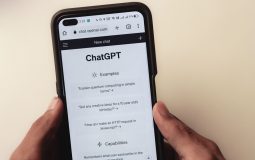What problem are we actually solving?
Most cross-border teams don’t need another jurisdiction—they need one they can explain. In 2025, a Seychelles IBC still works when the brief is simple: a limited-liability vehicle that can contract globally, open payment rails without endless back-and-forth, and pass basic counterparty reviews. The trick isn’t a clever structure; it’s clean execution and artifacts you can hand to banks, PSPs, and enterprise procurement without flinching.
If you’re weighing options, start with your next three procurement packs. What will those reviewers ask for? Can you show it without a week of scrambling? Seychelles can be the right answer if your setup translates into evidence on day one.
Need the nuts and bolts? See Seychelles company formation for current requirements, timelines, and a sensible prep checklist.
A realistic two-week launch storyline
Day 1–3: Scope like an adult.
Write two short paragraphs that define what the entity does (e.g., global software/services, licensing of IP, consulting for APAC/EU clients) and—crucially—what it doesn’t (no client asset custody, no exchange matching, no regulated activity). Share that scope with every provider you engage. Ambiguity is the biggest time-sink in cross-border ops.
Day 4–6: Incorporate and appoint.
Incorporate the IBC, issue shares, name directors, and pass a few plain-English board resolutions: banking/PSP applications, accounting provider appointment, signatories, and contract approvals over a threshold. Keep minutes short: decisions, owners, deadlines.
Day 7–10: Rails and records.
Open two money rails (primary + fallback). Turn on monthly bookkeeping immediately so your first management accounts land on time. Document access controls for any system that moves funds, customer data, or keys. Capture who can do what—then store exports in a living vendor folder.
Day 11–14: Evidence by default.
Run a dry-run “procurement pack.” Include: the corporate set (incorporation + share register), org chart, funds-flow one-pager, access-control export, and short notes on complaints handling, incidents, and vendor oversight. If that pack feels heavy, you’re over-writing. Keep it readable.
What partners will ask—and how to answer without speeches
Bankers and PSPs don’t buy promises; they buy proof you can operate predictably. Expect three themes:
-
Accountability. Who is on the hook for compliance and finance? Name the roles, not just the people. If your Compliance Officer or MLRO is “on paper,” reviewers will spot it in minutes. Give them a decision log or training register to point at.
-
Money movement. Where do customer payments land, who can release funds, and what’s the reconciliation cadence? A one-screen diagram beats walls of text. Add an exceptions paragraph: “If X fails, we switch to Y; here’s the sign-off.”
-
Operational hygiene. Show change logs for production systems, backups and restore tests, and a simple incident template (date, impact, action, owner). You don’t need big-bank rituals—just proof you thought about failure in advance.
Banking and payments: set expectations you can keep
If you walk into a Tier-1 bank with a brand-new offshore company and no track record, you’ll be asked for heavier substance or domestic nexus. That’s normal. Many teams start with EMIs/PSPs that underwrite digital businesses, then step up the ladder once volumes are predictable and governance is boring—in a good way. What accelerates the climb is clarity: written acceptance criteria, refund timelines, chargeback handling, reconciliations that actually reconcile, and log-backed post-mortems when something wobbles.
If you’re crypto-adjacent (or crypto-curious)
A Seychelles IBC can sit comfortably as a vendor to licensed exchanges, custodians, iGaming operators, or analytics platforms. The boundary line is everything: “We build software; we don’t hold client assets; we don’t run an exchange or payment service.” Publish that boundary and include it in every vendor pack. If you later pursue a supervised permission elsewhere (EU passporting under MiCA, Dubai VARA, Malaysia VASP), those habits become your submission’s strongest pages.
What “good” looks like in the wild
A five-person analytics startup moved their services/IP into a Seychelles IBC in Q2. They kept governance tiny but real: monthly minutes with three decisions and owners, a payment approvals grid, and a vendor file per critical provider (contract + SLA + security note + exit plan). Their funds-flow and scope documents fit on one sheet each. When a high-street PSP reviewed them, the analyst had everything needed in the first email. Account live in four days. Not because Seychelles is “magic,” but because the team had a pack any analyst could read in ten minutes.
Answering the “Why Seychelles?” email
When procurement inevitably asks, “Why this jurisdiction?” reply with facts, not vibes. Predictable incorporation. Familiarity among counterparties. Straightforward upkeep. A credible path to heavier rails once track record is established. Include the two-paragraph scope and the banking diagram. Then attach your reconciliations and access-control export. You’ll feel the temperature in the thread drop.
About the team behind this guidance
LegalBison has supported more than 700 entrepreneurs with company formation, licensing, and compliance services across multiple jurisdictions. Known for its professional guidance and global reach, the firm is regarded as a trusted name in offshore corporate advisory.
Final notes (read this part)
This article is informational and not legal, tax, or investment advice. Rules evolve. Validate any decision against current supervisory materials before acting. If Seychelles looks right for your next procurement pack, start with the artifacts your partners will actually ask for—and let the incorporation confirm a discipline you already run.







